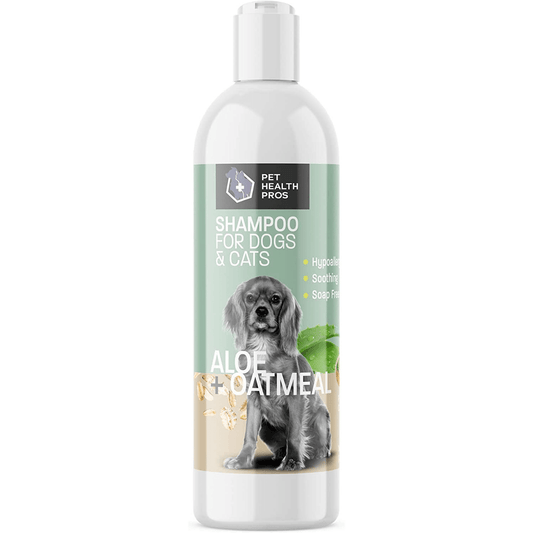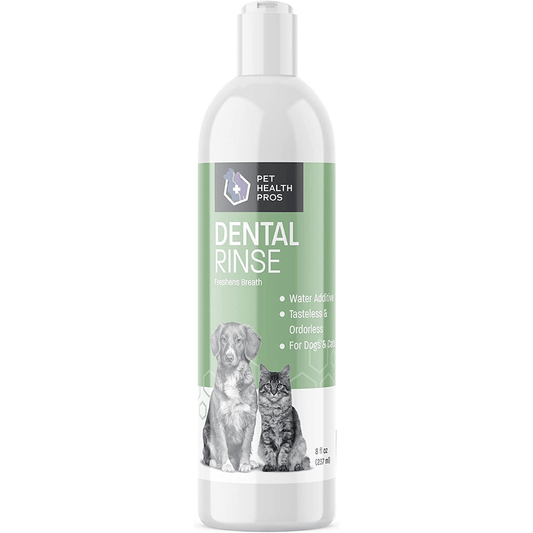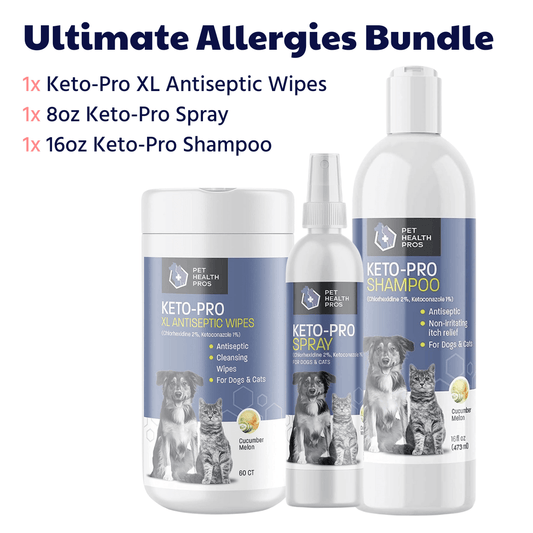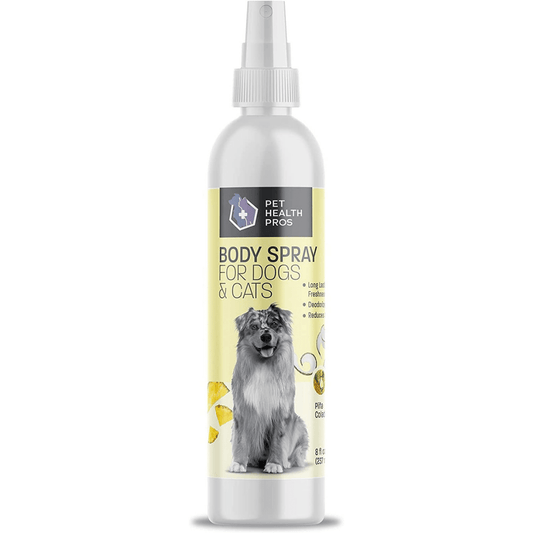Ensuring your dog’s health and well-being is a top priority for any pet owner. One essential aspect of pet care is maintaining proper hygiene, especially when it comes to wounds and infections. Antiseptic flushes are a valuable tool in a pet owner's arsenal, helping to clean and disinfect areas that are prone to infection. In this article, we will explore how to effectively use antiseptic flushes for dogs, offering practical tips and tricks to make the process easier for both you and your furry friend.
Key Takeaways
- Understanding the purpose and benefits of antiseptic flushes can help in maintaining your dog’s health.
- Recognizing the right time to use an antiseptic flush is crucial for effective treatment.
- Proper application techniques ensure the safety and comfort of your dog during the cleaning process.
- Choosing the right product involves considering factors like ingredients and veterinarian recommendations.
- Monitoring your dog’s health post-treatment helps in preventing future infections and ensuring a swift recovery.
Understanding Antiseptic Flush for Dogs
What is Antiseptic Flush?
Antiseptic flush is a specially formulated solution used to clean and disinfect wounds, cuts, and abrasions on dogs. It helps prevent infections by eliminating bacteria, fungi, and other pathogens. This solution is often recommended by veterinarians for its effectiveness and ease of use.
Benefits of Using Antiseptic Flush
Using antiseptic flush on your dog can offer several benefits:
- Prevents infections by killing harmful microorganisms
- Promotes faster healing of wounds
- Reduces the risk of complications
- Can be used for both minor cuts and more serious injuries
Common Ingredients in Antiseptic Flush
Antiseptic flush solutions typically contain a variety of active ingredients that work together to ensure effective cleansing. Some common ingredients include:
- Chlorhexidine: A powerful antiseptic that kills bacteria and fungi
- Ketoconazole: Often found in keto ear flush for dogs, it manages fungal activity
- Alcohol: Helps to disinfect the area
- Saline: A gentle cleanser that helps to remove debris and dirt
It's important to choose an antiseptic flush that is specifically formulated for dogs to ensure safety and effectiveness.
When to Use Antiseptic Flush for Your Dog
Identifying Infections and Wounds
Recognizing when your dog needs an antiseptic flush is crucial. Look for signs of infection such as redness, swelling, or discharge. Minor cuts and abrasions can also benefit from an antiseptic flush to prevent infection and promote healing. If your dog has a torn nail, an antiseptic flush can help clean the area and reduce the risk of infection.
Routine Cleaning vs. Emergency Use
Antiseptic flushes can be used for both routine cleaning and emergency situations. For routine cleaning, use the flush to maintain hygiene in areas prone to dirt and bacteria, such as paws and ears. In emergencies, an antiseptic flush can be a first line of defense to clean wounds before seeking veterinary care. Always have an antiseptic flush on hand for unexpected injuries.
Consulting Your Veterinarian
Before using an antiseptic flush, it's wise to consult your veterinarian, especially for severe wounds or infections. Your vet can provide guidance on the best products to use and how to apply them properly. They can also advise on any potential side effects and what to watch for during the healing process.
Keeping an antiseptic flush in your pet first aid kit can be a lifesaver in emergency situations, helping to clean and protect wounds until professional care is available.
How to Properly Apply Antiseptic Flush
Step-by-Step Application Guide
Applying antiseptic flush to your dog can be straightforward if you follow these steps:
- Prepare the area: Ensure the wound or infection site is clean. You may need to trim the fur around the area.
- Gather your materials: Have the antiseptic flush, cotton balls or gauze, and gloves ready.
- Apply the flush: Gently pour or spray the antiseptic flush onto the affected area.
- Clean the area: Use cotton balls or gauze to wipe away any debris or discharge.
- Let it dry: Allow the area to air dry before covering it or letting your dog move around.
Tools and Materials Needed
To properly apply antiseptic flush, you will need the following tools and materials:
- Antiseptic flush solution
- Cotton balls or gauze
- Gloves
- Scissors (if trimming fur is necessary)
Safety Precautions
When using antiseptic flush, it's important to follow these safety precautions:
- Wear gloves to protect yourself from any potential contaminants.
- Avoid getting the antiseptic flush in your dog's eyes, nose, or mouth.
- Monitor your dog for any signs of adverse reactions, such as redness or swelling.
Regularly enhancing your dog's health with chlorhexidine wipes can also be beneficial. These wipes have antiseptic properties that reduce infections, promote healing, and maintain hygiene. Always follow vet instructions for best results.
Choosing the Right Antiseptic Flush for Your Dog
Factors to Consider
When selecting an antiseptic flush for your dog, it's essential to consider several factors to ensure you choose the best product. Your dog's specific needs should be the primary consideration. For instance, if your dog has sensitive skin, look for a product that is gentle and hypoallergenic. Additionally, consider the type of infection or wound you are treating, as some antiseptic flushes are formulated for specific conditions.
Recommended Products
There are numerous antiseptic flush products available on the market, but some stand out due to their effectiveness and safety. Here are a few recommended options:
- Vetericyn Plus Antimicrobial Pet Wound and Skin Care: Known for its broad-spectrum antimicrobial properties.
- Pet Health Pros Antiseptic Flush: A trusted option developed in collaboration with veterinarians.
- Curaseb Antiseptic Flush: Popular for its effectiveness against bacterial and fungal infections.
Reading Labels and Ingredients
Reading the labels and ingredients of antiseptic flush products is crucial. Look for products that contain safe and effective ingredients such as chlorhexidine or hypochlorous acid. Avoid products with harsh chemicals or artificial fragrances that could irritate your dog's skin. Always check for any potential allergens that might affect your pet.
Choosing the right antiseptic flush can significantly impact your dog's healing process. Ensure you select a product that meets your dog's specific needs and consult your veterinarian if you have any doubts.
Tips for Making the Process Easier
Keeping Your Dog Calm
Ensuring your dog remains calm during the application of antiseptic flush is crucial. A calm dog is less likely to resist treatment, making the process smoother for both you and your pet. You can use soothing tones and gentle petting to help your dog relax. Additionally, creating a quiet environment free from distractions can significantly aid in keeping your dog calm.
Using Treats and Rewards
Incorporating treats and rewards can make the antiseptic flush process more pleasant for your dog. Offer a treat before and after the application to create a positive association with the procedure. This method not only helps in keeping your dog still but also makes the experience less stressful.
Creating a Routine
Establishing a routine can make the antiseptic flush process more predictable and less stressful for your dog. Try to perform the flush at the same time and place each day. Consistency helps your dog understand what to expect, reducing anxiety and resistance over time.
Remember, patience and consistency are key. Over time, your dog will become more accustomed to the process, making it easier for both of you.
Potential Side Effects and How to Handle Them
Recognizing Adverse Reactions
When using antiseptic flush for your dog, it's crucial to be aware of potential side effects. Common side effects may include redness, swelling, or discomfort at the application site. In some cases, your dog might exhibit signs of an allergic reaction, such as excessive itching or hives. Monitoring your dog closely after application can help you identify any adverse reactions early.
Immediate Steps to Take
If you notice any adverse reactions, take immediate action to mitigate the effects. Rinse the affected area with clean water to remove any remaining antiseptic solution. You can also apply a cold compress to reduce swelling and discomfort. If symptoms persist, consult your veterinarian for further advice.
When to Seek Professional Help
In severe cases, such as difficulty breathing or severe swelling, seek professional help immediately. Contact your veterinarian or an emergency animal clinic to ensure your dog receives the necessary care. It's always better to err on the side of caution when it comes to your pet's health.
Keeping a close eye on your dog after using an antiseptic flush can help you catch any potential issues early, ensuring a swift response and minimizing discomfort for your pet.
Maintaining Your Dog’s Health Post-Treatment
Monitoring the Healing Process
After administering an antiseptic flush, it's crucial to keep a close eye on your dog's healing progress. Regularly inspect the treated area for signs of improvement or any adverse reactions. Look for reduced redness, swelling, and discharge. If you notice any unusual changes, consult your veterinarian immediately.
Preventing Future Infections
To prevent future infections, maintain a clean environment for your dog. Regularly clean their bedding, toys, and living areas. Additionally, ensure your dog is groomed properly, as matted fur can harbor bacteria. Routine cleaning and grooming can significantly reduce the risk of infections.
Regular Veterinary Check-Ups
Regular veterinary check-ups are essential for maintaining your dog's overall health. Schedule routine visits to catch any potential health issues early. Your vet can provide personalized advice on how to keep your dog healthy and prevent infections. Remember, consulting your veterinarian is always a good practice to ensure your pet's well-being.
Keeping a close watch on your dog's health post-treatment is vital. Regular inspections and maintaining a clean environment can go a long way in preventing future issues.
Maintaining your dog’s health post-treatment is crucial for their overall well-being. At Pet Health Pros, we offer a range of products to support your furry friend's recovery and ongoing health. Visit our website to explore our vet-approved, USA-made pet health supplies and ensure your pet stays happy and healthy.
Conclusion
Using antiseptic flush for dogs is a crucial aspect of maintaining your pet's health and well-being. By following the tips and tricks outlined in this article, you can ensure that your furry friend receives the best care possible. Remember, Pet Health Pros is dedicated to providing superior, affordable pet health supplies, crafted in collaboration with veterinarians and made with top-grade ingredients. With over fifty years of combined experience in Veterinary Medicine and Animal Health Management, our U.S.-based company stands by a 100% satisfaction guarantee. Trust in our expertise and commitment to continually improve our products and services to meet the evolving needs of pets and their owners. For more information and to explore our range of expertly crafted pet health solutions, visit our online store or Amazon storefront. Together, we can ensure healthier pets and happier lives.
Frequently Asked Questions
What is antiseptic flush for dogs?
Antiseptic flush for dogs is a solution used to clean and disinfect wounds, infections, or areas prone to bacterial growth. It helps prevent infection and promotes healing.
How often should I use antiseptic flush on my dog?
The frequency of use depends on the specific condition being treated. For routine cleaning, once a day may be sufficient. For more severe infections, follow your veterinarian's advice.
Can I use human antiseptic solutions on my dog?
It's not recommended to use human antiseptic solutions on dogs as they may contain ingredients harmful to pets. Always use products specifically formulated for animals.
What should I do if my dog has an adverse reaction to antiseptic flush?
If your dog shows signs of an adverse reaction, such as redness, swelling, or discomfort, stop using the product immediately and consult your veterinarian for guidance.
Are there any side effects of using antiseptic flush on dogs?
While generally safe, some dogs may experience mild irritation or allergic reactions. Always monitor your dog after application and consult your vet if you notice any unusual symptoms.
How do I choose the right antiseptic flush for my dog?
Consider factors such as the type of wound, your dog's skin sensitivity, and any ingredients they may be allergic to. Consult your veterinarian for product recommendations.









